Tools help teach young children about aspects of India’s diverse cultures
When it comes to inspiring kids with cultural stories and traditions, finding the right tools can be a challenge. While many of us masalamommas don’t want to bombard kids with culture, we do want to share our roots and language with kids in a way that is not only fun but one that will have a positive impact.
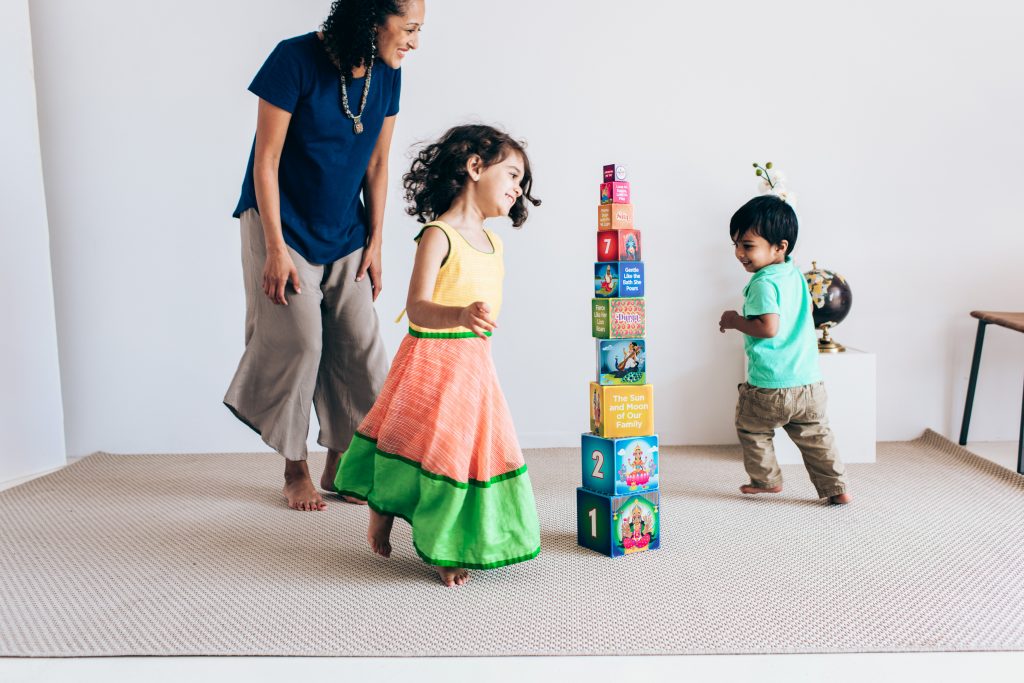
That’s what inspired Rupa and her husband, Emre, who did not feel totally equipped to pass on their cultural traditions (Indian + Turkish) to their kids. As the children of immigrants, they always felt a little shaky about their roots. Parenthood brought on a responsibility and opportunity to be teachers. When they searched for tools and resources, they couldn’t find much and what they did find wasn’t simple or memorable enough.

After spending 15 years using tech, design thinking and innovation to help people live and work better, Rupa decided to shift gears and help families play better! The result? Jai Jai Hooray!
Meet Rupa Parekh in this interview:
What was the inspiration behind Jai Jai Hooray?
Growing up as a first generation Indian-American, though I felt very connected to my culture, my knowledge of traditions and customs was always shaky. I still call my mom for reminders—how do you make that dish again? What’s this holiday about?
My Turkish-American husband can relate. When we had kids, we had the responsibility and opportunity to go from students to teachers overnight. Only we felt ill-equipped . We didn’t have the right tools and resources.
I couldn’t find much online or in the stores that felt simple, beautiful and designed with kiddos in mind. I started Jai Jai Hooray about a year ago with the goal of introducing aspects of India’s diverse cultures to new audiences.
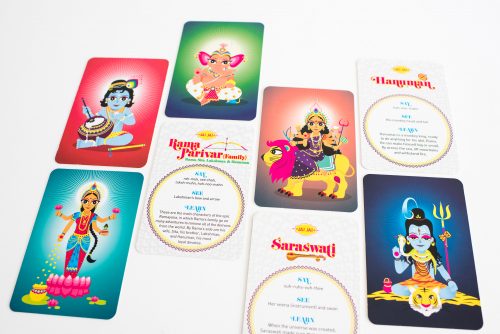
What is Jai Jai Hooray about?
We launched with a set of Hindu deity flashcards that put a fresh face on the classic mythological characters. On the back is a simple SAY-SEE-LEARN framework that teaches the basics. They were an instant success. Within a few months, The Rubin Museum of NYC, Asian Art Museum of San Francisco, and a handful of specialty kids stores started carrying the cards. In the summer of 2017, we launched our second product, The Goddess Power Tower, as well as a set of exclusive art prints. Mumbai-based artist, Ajinkya Bane, illustrated the collection.
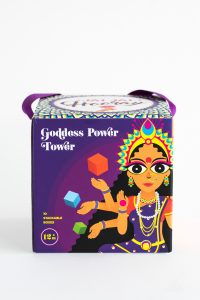
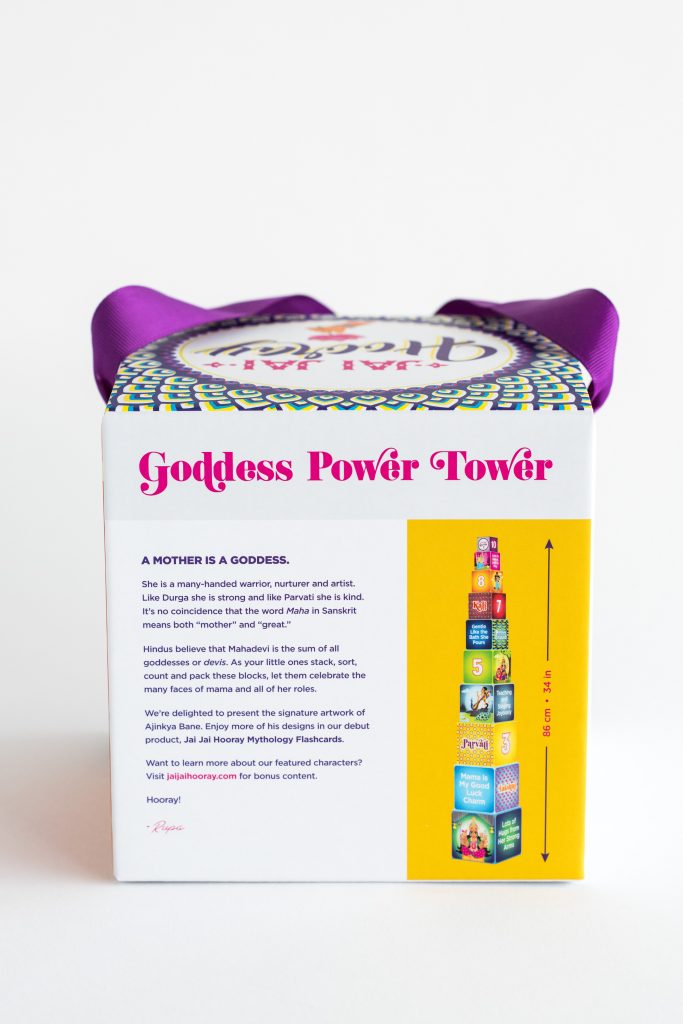
What is the Goddess Power Tower?
Our first toy! We put a new twist on the classic format of stacking / nesting blocks. Our blocks feature the fiercest female deities of Hinduism alongside a poem about mama that builds with every block. Each stanza is super relevant to each goddess.
For example on Lakshmi’s block, we say Mama is My Good Luck Charm. We figured who is a goddess to a child? Mom! She’s the 14-armed superhero; a nurturer, artist and warrior all at once. We wanted to give young girls and boys of all backgrounds a fun and easy way to celebrate mom and all of her powers, everyday.
How did you come up with the idea to create a poem?
Poetry and Play – Behind the Scenes of the Goddess Power Tower from Umani on Vimeo.
It was inspired by Kali. A lot of moms don’t know how to explain her characteristics to children because she traditionally has some scary iconography associated with her. But Kali is actually a positive and joyful force. She keeps the monsters away at night. In the spirit of beautiful simplicity we asked ourselves if we could come up with short verses for each goddess and that’s how the poem was created.
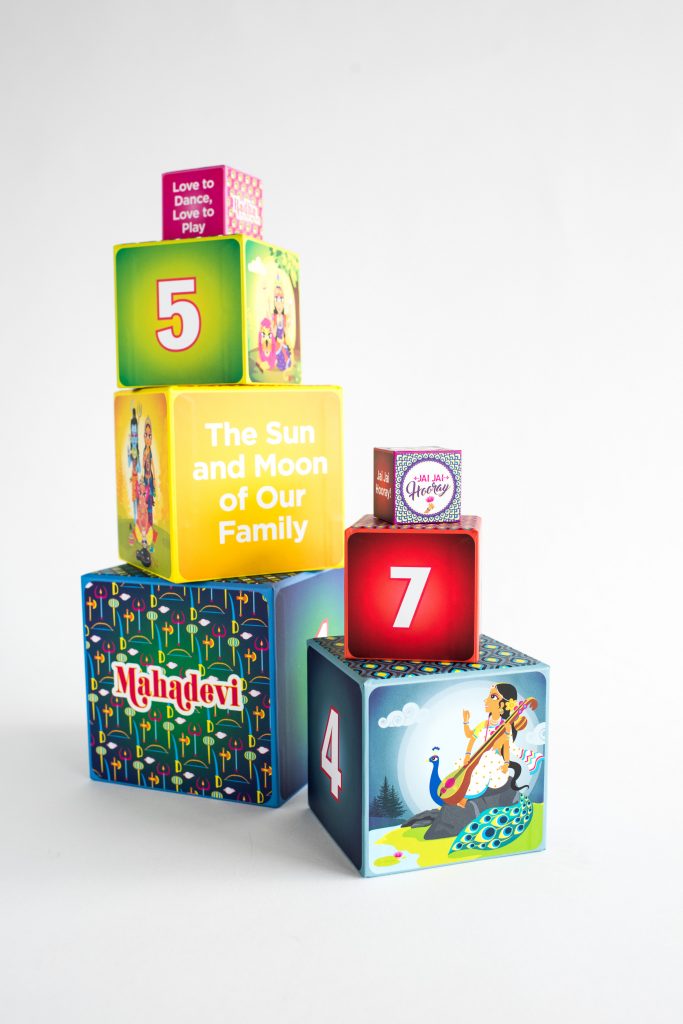
What was the design journey for you in developing these products?
I’ve worked in innovation and tech so I’m a big believer in prototyping concepts quickly so you can test them with customers as soon as possible. When I came up with the idea for the cards and Ajinka began designing, we set an aggressive deadline for a prototype: 6 weeks to get a complete set of cards together so I could take them along to an Indian wedding. At this time, I had no idea if they would come in a sleeve or a box; I printed them at Kinkos. It was a great opportunity to get the cards in the hands of people from all over the world. I made multiple sets and gave them out to friends. The best feedback was hearing people I didn’t know at the event ask where they could buy them.
We followed the same process with the tower. It was a more complicated product so the testing was much more involved, but we essentially asked kids to go nuts with them. We really wanted to make sure they were “kid-proof.”
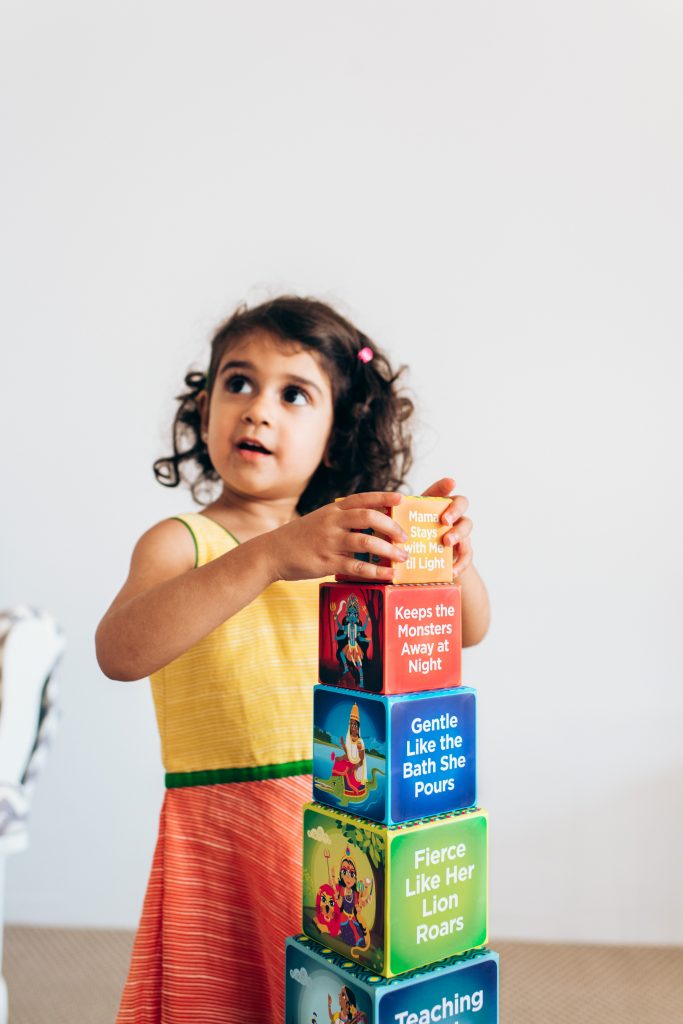
How is our generation changing the conversation around culture?
I think our generation—especially those of us who are part of the diaspora—want more logic and reasoning around why things matter. And our kids will be even more scrutinizing. Our philosophy is to design things that are simple enough for anyone to become a teacher or a student, no matter what their age or background.
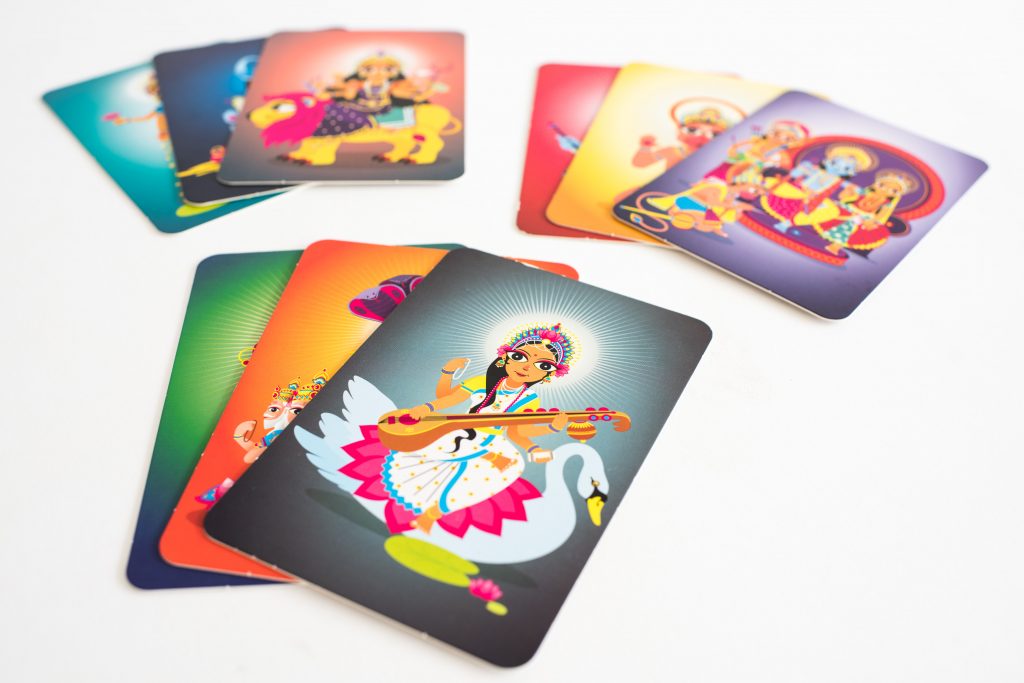
It’s heartening to see people who don’t have kids buy our products. They are lifelong learners and global citizens who want doorways into cultures that interest them. At the same time, we get super excited to see 3-year-old Hindu kids use our cards and blocks to teach their younger siblings about mythology.



There are no comments
Add yours